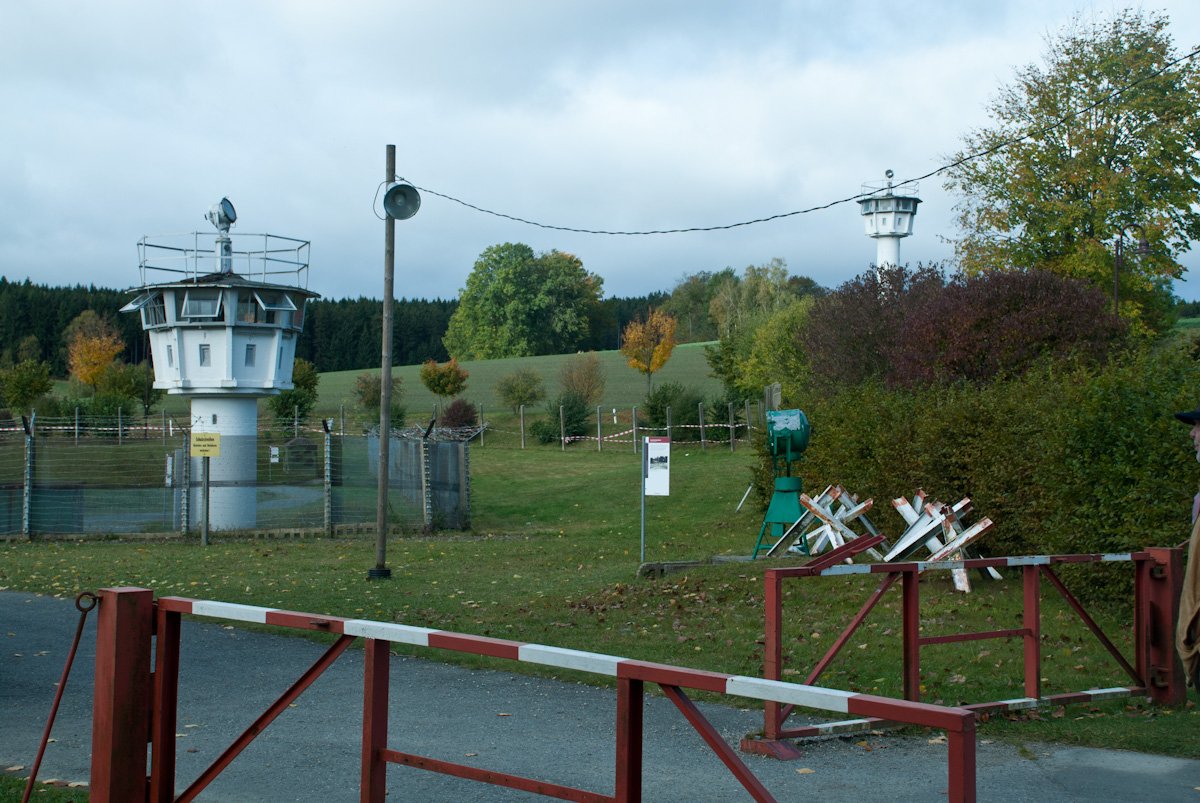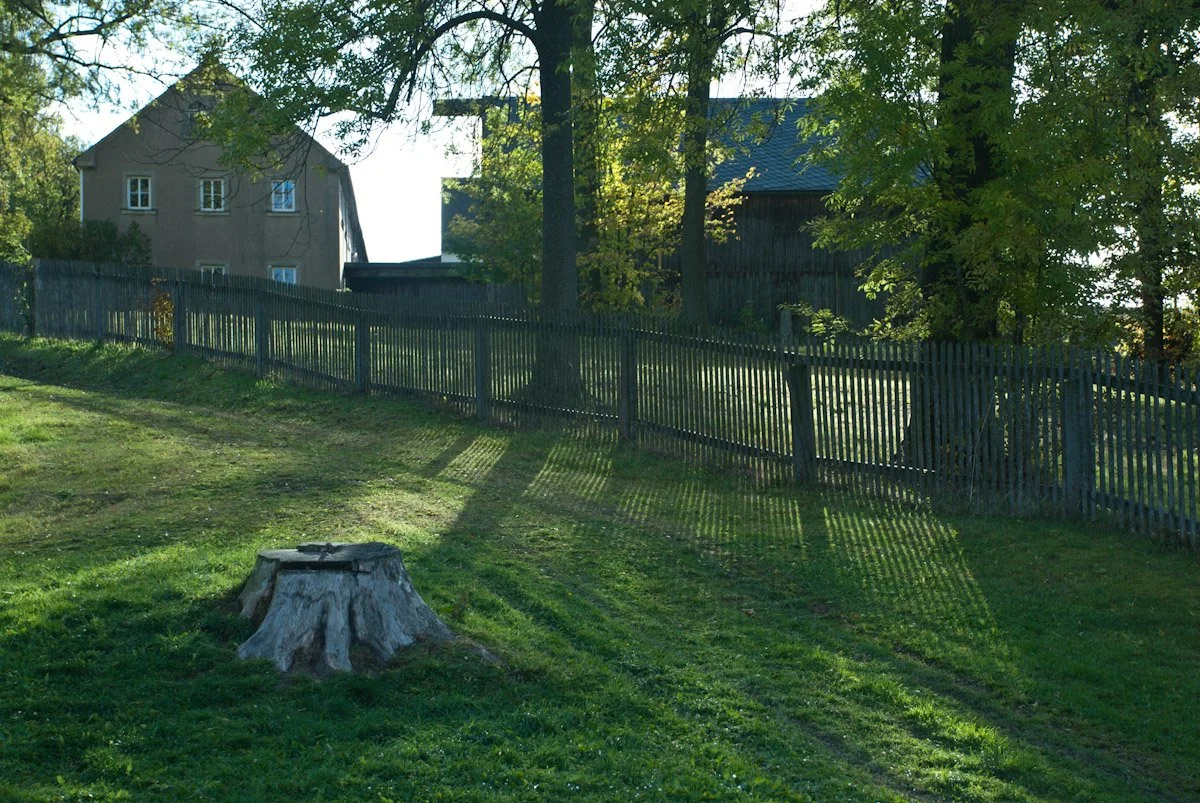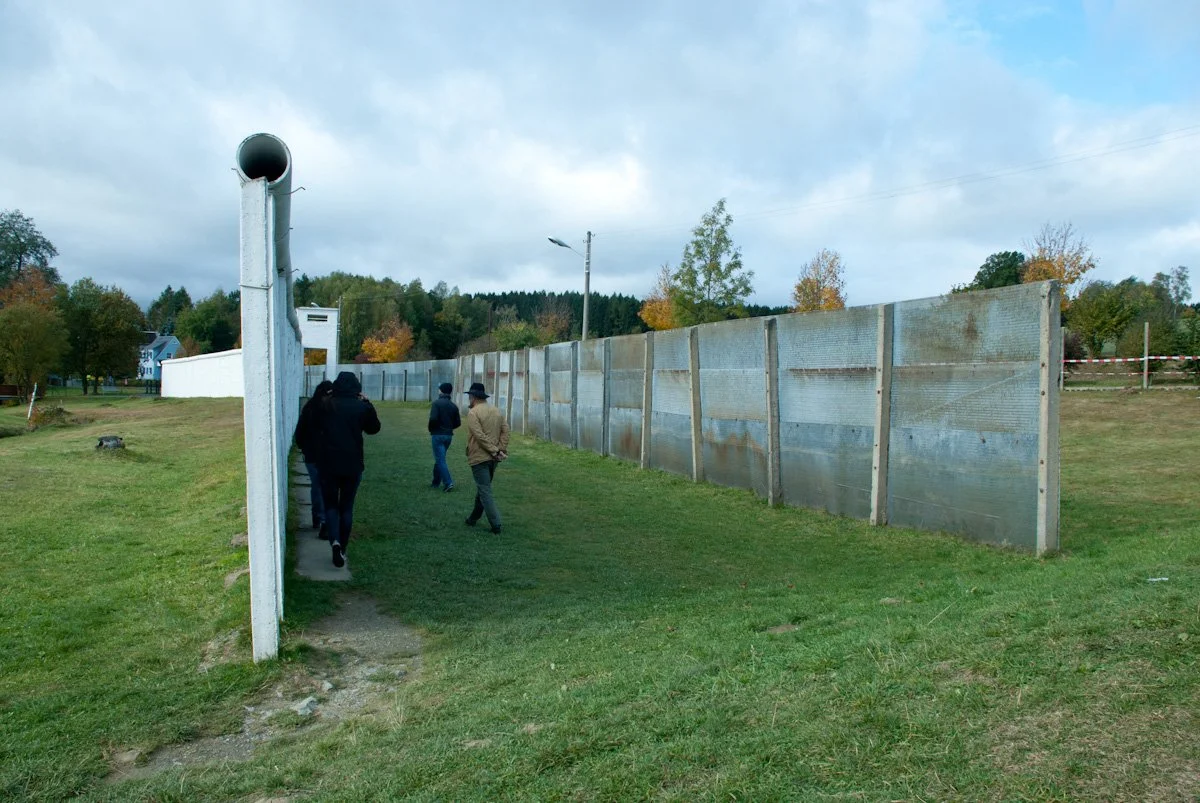
germany: modlareuth
14 october. 2012
On Saturday morning we all drove out to the village of Modlareuth about 50km north of Weiherhofen. Modlareuth is a very small village right on the border of Eastern and Western Germany. When the allied forces divided up Germany after World War Two, the Soviets maintained oversight of the area known as Eastern Germany, while the Americans, British and French oversaw the rest of what came to be known as Western Germany. Additionally, Berlin, the primary city, was divided among the allied forces while it sat in the middle of Soviet controlled Eastern Germany. As the schism between communism and democracy heightened, increasing protective measures were implemented to prevent the defection of the East German citizens to the free Western Germany, thus the Great Wall in Berlin. Modlareuth suffered the same fate as Berlin, instead of a wall running through the center of the city, there was a wall running through the center of this little village of fifty people. Families and friends, thirty feet apart from one another, were separated from and divided along this line for the next forty years.
In the late 1940’s, the Tannbach stream was established as this border between Soviet controlled East Germany and U.S. Controlled West Germany, as it was the border between the German states of Thuringian and Bavaria. Unfortunately for the residents of Modlareuth, the village strattled this border. Early on the stream was known as ‘The Green Border’, and people could come and go as they pleased. Then in 1952 a wooden fence was erected as a physical barrier between the two halves of the village. As the Soviets implemented more communist authority, villagers were getting antsy. Soon after, the East German police came in the middle of the night to move the residents inland while a taller steel fence was erected (an iron curtain). A few of the villagers recognized what was in store and made a run for it, jumping from tall windows and dashing for the border while the police waited outside for them... leaving all their belongings behind. Finally, in 1966, 700 meters of concrete walls were erected which would divide the village for the next twenty-three years. The measures installed to keep people from defecting (or to keep West Germans from trying to get into East Germany, as the East Germans were informed) were mind numbing. By the 1980's the border consisted of, from the East German side: traffic barricades; automobile ditches; a sand raked identification strip (to see if any foot traffic had passed); the steel fence with electrified barbed wire and sensors; interstitial zone with dogs on cables; and finally the concrete wall. Lots of time and effort to keep people in.
It was fascinating to talk with Henry and Githa about what it was like to live in this very unique part of the world in the late 1980’s. They were 50km from the East German border and 25km from the Czech border, and on top of that, their oldest sone Daniel was born just six months before the collapse of the Iron Curtain. The borders were opened on October 9, 1989 (I can still remember this though I probably wasn’t old enough to really appreciate it). Henry recalls it as a very emotional and joyous time for the people of the area. The following day, Henry was driving home from work and at about 8:00pm and passed a gentleman on a bicycle. He stopped to give the man a lift to the closest train station and came to find out that the man was from Eastern Germany. He had heard that the borders were open but didn't believe it, so he decided to go for a bike ride to see for himself... From East Germany into the Czech Republic and then on into Western Germany, all in one day... 200km later Henry picked him up. Henry invited the gentleman back to the house to spend the night as it was getting late and the temperature was colder than normal. He wound up staying and working on the property for a week. Finally he got back on his bike to ride back to East Germany a wealthy man!





